My second year of shooting film Part 13
A friend of mine is a guitarist in a band, and when they play I enjoy photographing their performance. So far I have been covering that with my digital camera, as it feels safer and more flexible. But I was up for some experiment with my M2 after shooting mainly landscapes, so I wanted to try photographing them on film. I decided to use Kodak Tri-X, since I had that lying in my fridge anyway. I considered buying HP5+ as I had read that you can push that pretty well, but then I remembered that Anton Corbijn (famous Dutch photographer who has shot a lot of pop and rock bands) shoots Tri-X, and if it’s good enough for Anton Corbijn it should be good enough for my friends band….
I spent quite some time deliberating over how far to push it, was two stops going to be enough or should I go for three? On the internet I found some great examples of pushing two stops, but three seemed to be more risky, as the results could become quite grainy. I decided to do a light measurement in the venue where the band was going to play and base my decision on that. However, that turned out to be not so obvious, since the lights were changing all the time. I decided to go for three stops, basing my exposure on iso 3200, and allow myself a bit more room with respect to motion blur. That is helpful as I find it can be quite a challenge to stand still when a band plays great music. I even noticed a moment when I tried to keep my camera stable when jumping up and down during a particularly catching song. But alas, those are the challenges of concert photography 😉 . I ended up using an aperture of 2.0 and a shutter speed around 1/250 second (on average).
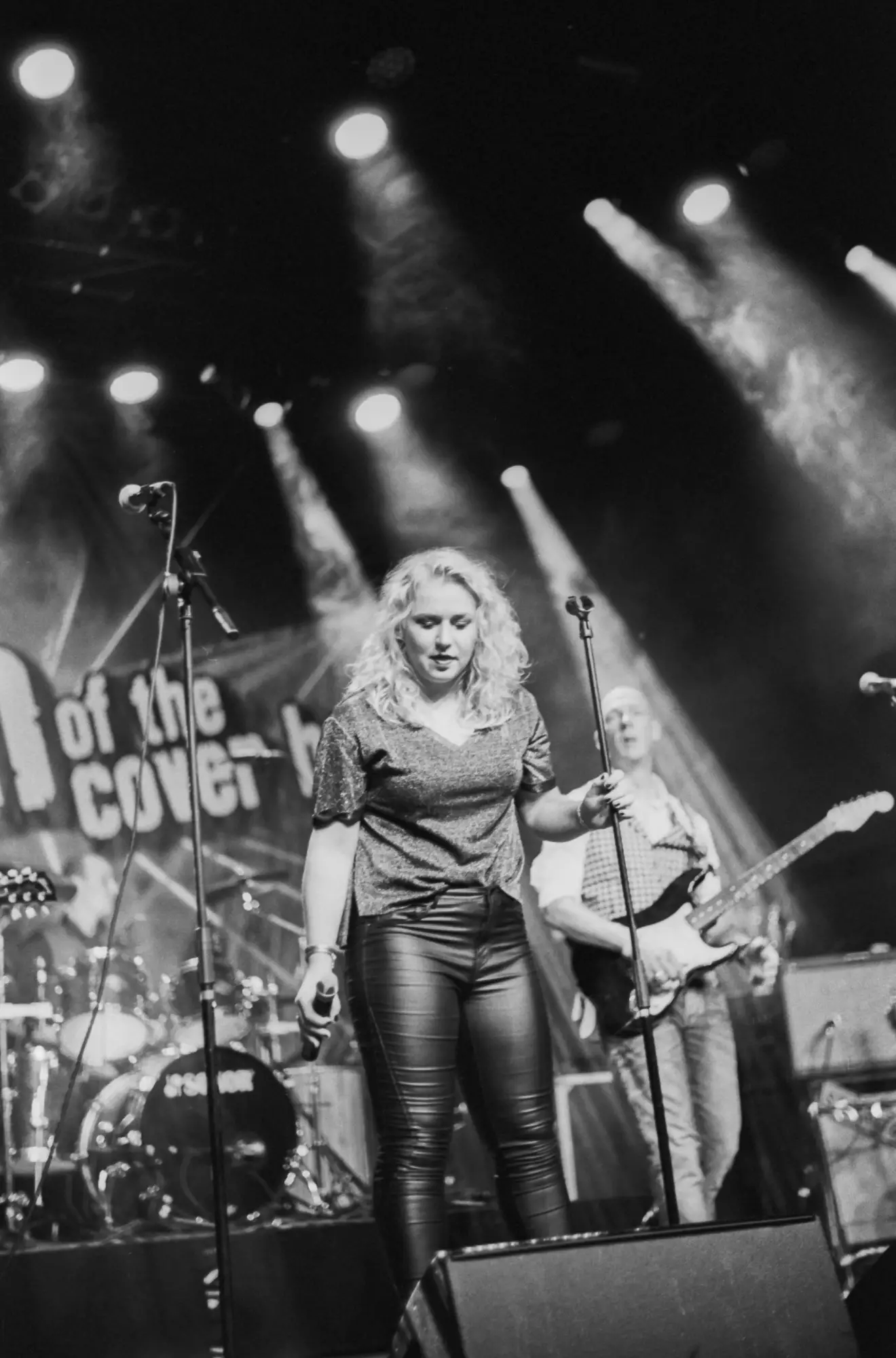
Apart from the difficulty of using film, there is another challenge using the M2. Like I mentioned before, the lights were changing a lot during the performance: the shutter speeds of the photos I took with the M240 (digital camera with automatic exposure) range from 1/45 to 1/4000 seconds. However the M2 doesn’t have automatic exposure or even a light meter, and there is definitely no time to measure with an external meter for every shot. So I decided to try my luck, and use 1/250 as my base, but change it to 1/1000 if the lights looked very bright to me. And leave it up to the latitude of the film to take care of the rest of the fluctuations. It turns out that you can get away with a lot with Tri-X…
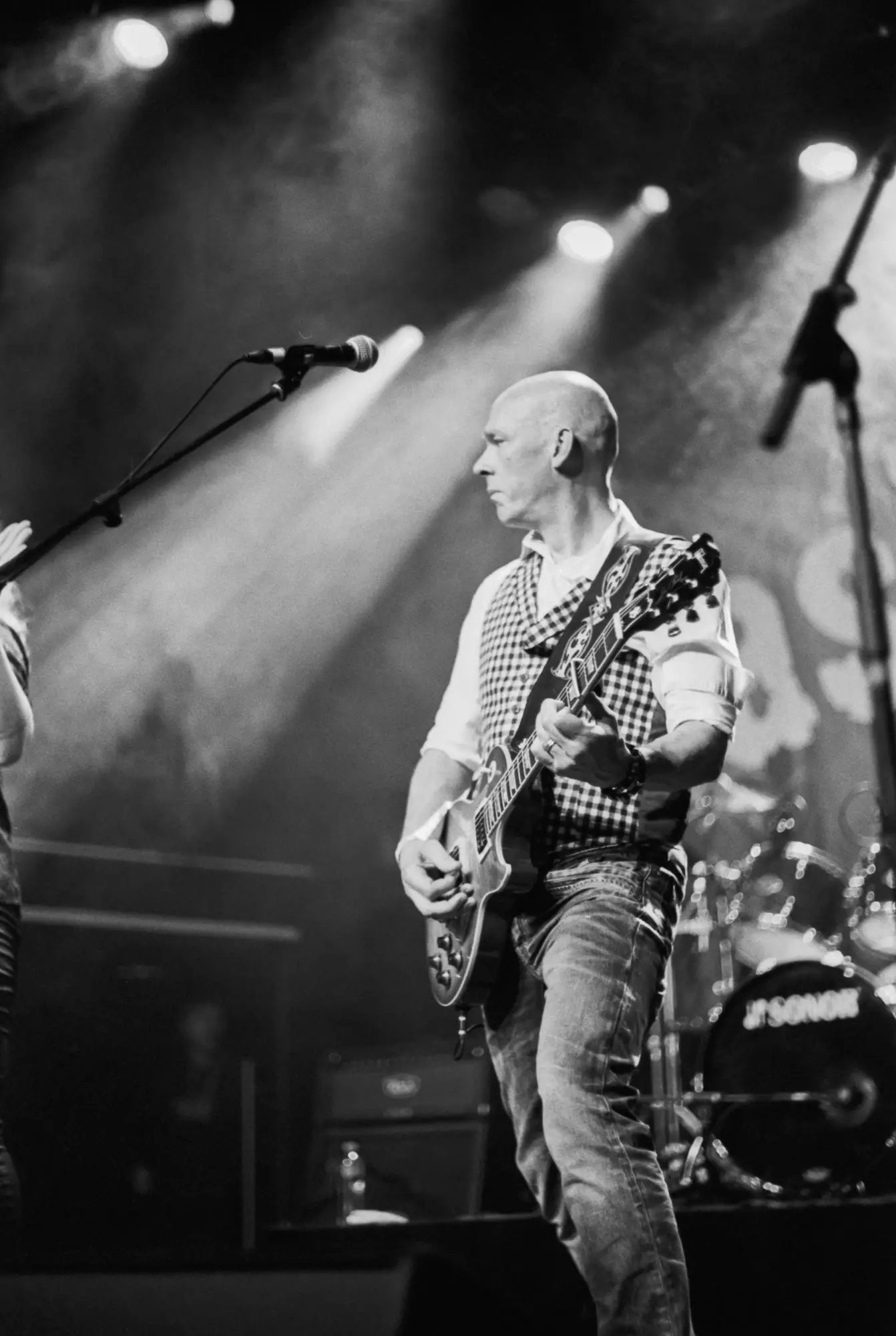
I had to wait quite some time for the results. As I usually do I sent my film to AG-photo lab for development, and so far it has taken about one week for the film to arrive at my house after receiving their dispatch notification. This time it took a horrifying four weeks! I had almost given up on seeing them ever again. But luckily I did, and I was very happy with the results. Although there is some variation in how dark and light the photos are, there is none that is too bright or too dark to be of use. That doesn’t mean all photos were good, but that was mainly due to lack of sharpness (should stop jumping while taking photos!) and bad framing, and for that I blame the moving musicians ;-). I scanned the photos myself and had no problem getting good files from the negatives. There doesn’t seem to be a lot of extra grain, and most images have good contrast, which I like for these type of photos. So I am quite happy with this experiment, and I will definitely explore the options of pushing further!

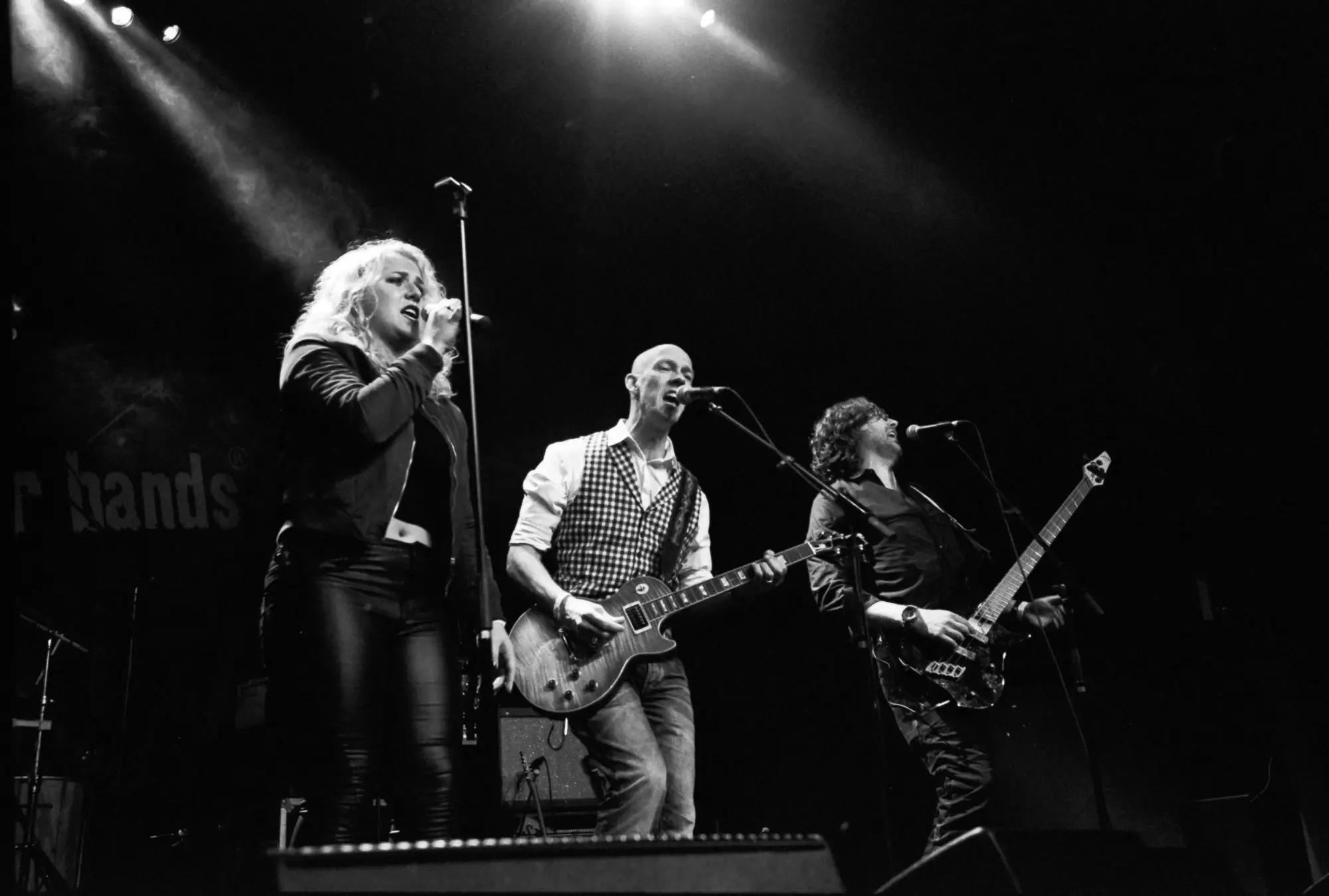
About the scanning: this is the first roll I didn’t get the lab to scan. A month ago I decided to buy a scanner myself after receiving some disappointing scans from the lab (not AG, I tried a different one). I have been thinking about getting a scanner, but I dreaded the amount of time involved and was afraid that even with a lot of my own time I would not be able to get quality results. But after a few disappointments from the lab I found myself not knowledgeable enough to have a good discussion with the lab. I realised that in order to get results I liked I would need to tell the lab what I want, but I didn’t know what it was. Should I ask for warmer colours in the highlights, cooler tones, more contrast, or less? So in the end I decided to buy a scanner to learn about the effect the scanning process has on the end result. I have practiced with some rolls from my previous lab order, allowing me to compare my own scans with the lab scans, but this was the first roll for which I would completely depend on my own scanning. Again, I am not disappointed. The files from this pushed film did not give me any extra trouble with respect to the scanning, and I am happy with the extra bit of control I get. I am working on a workflow for scanning colour, I might do a post about that in the future.
That leaves me with showing a few more photos from the concert:
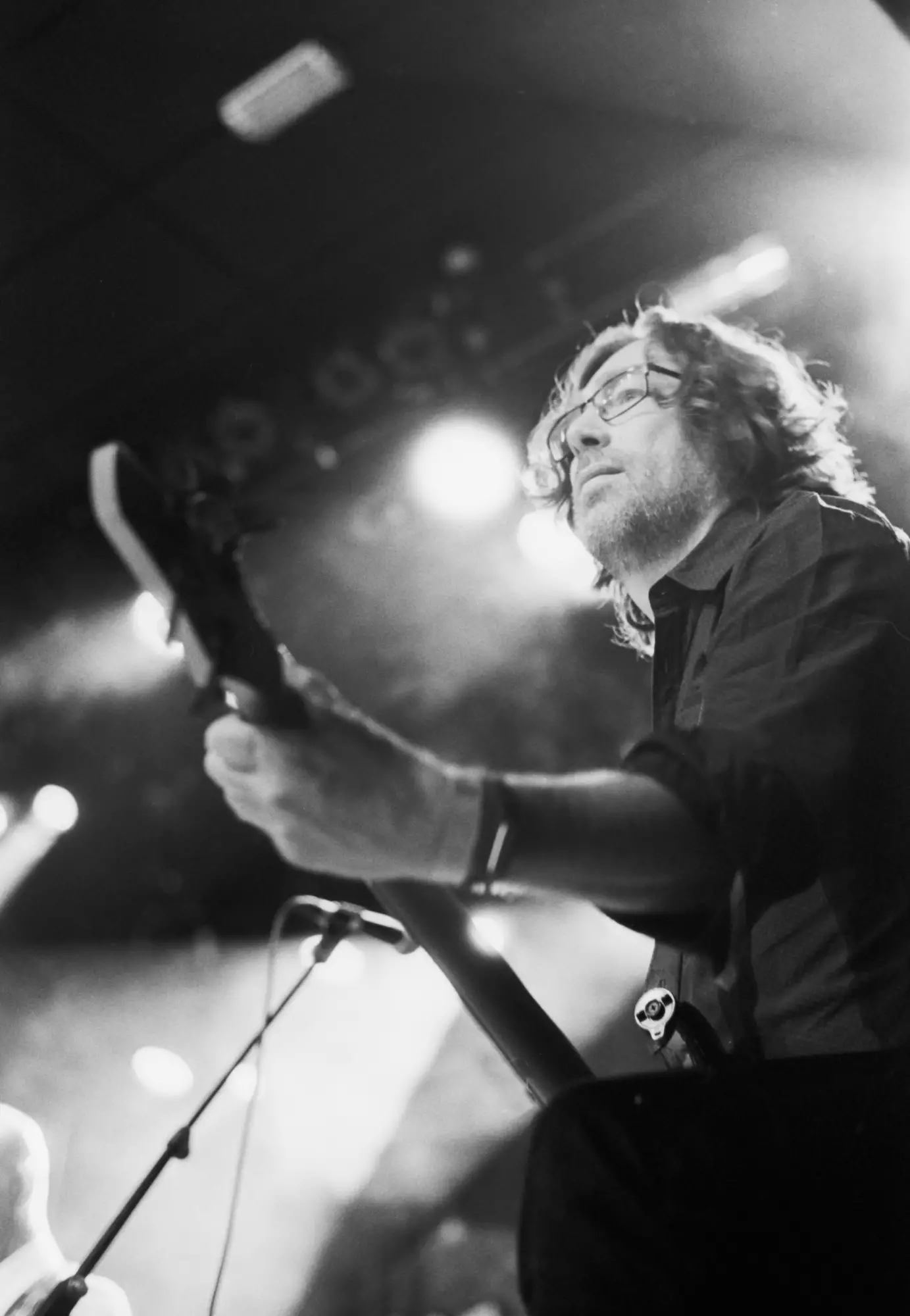
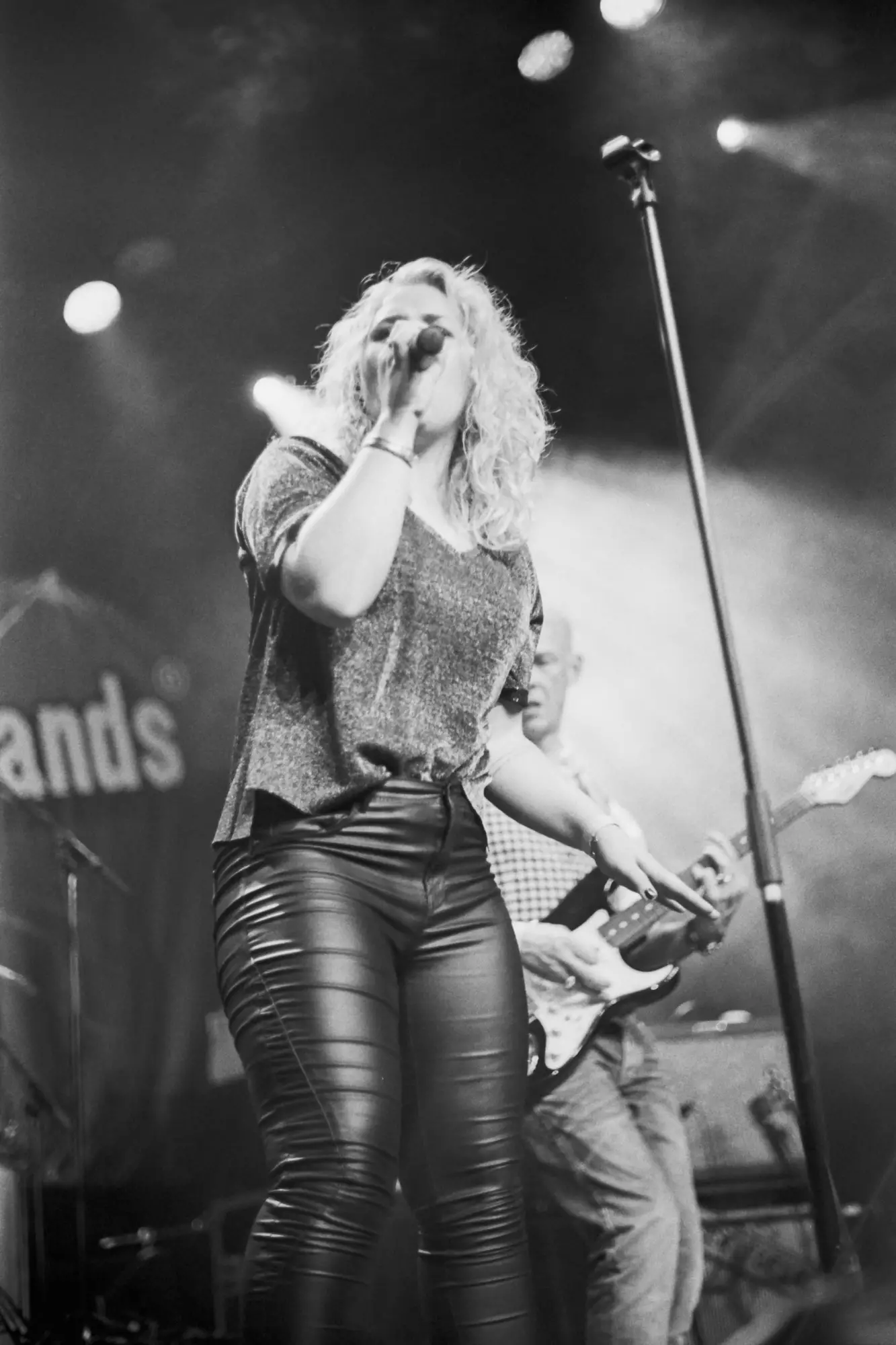
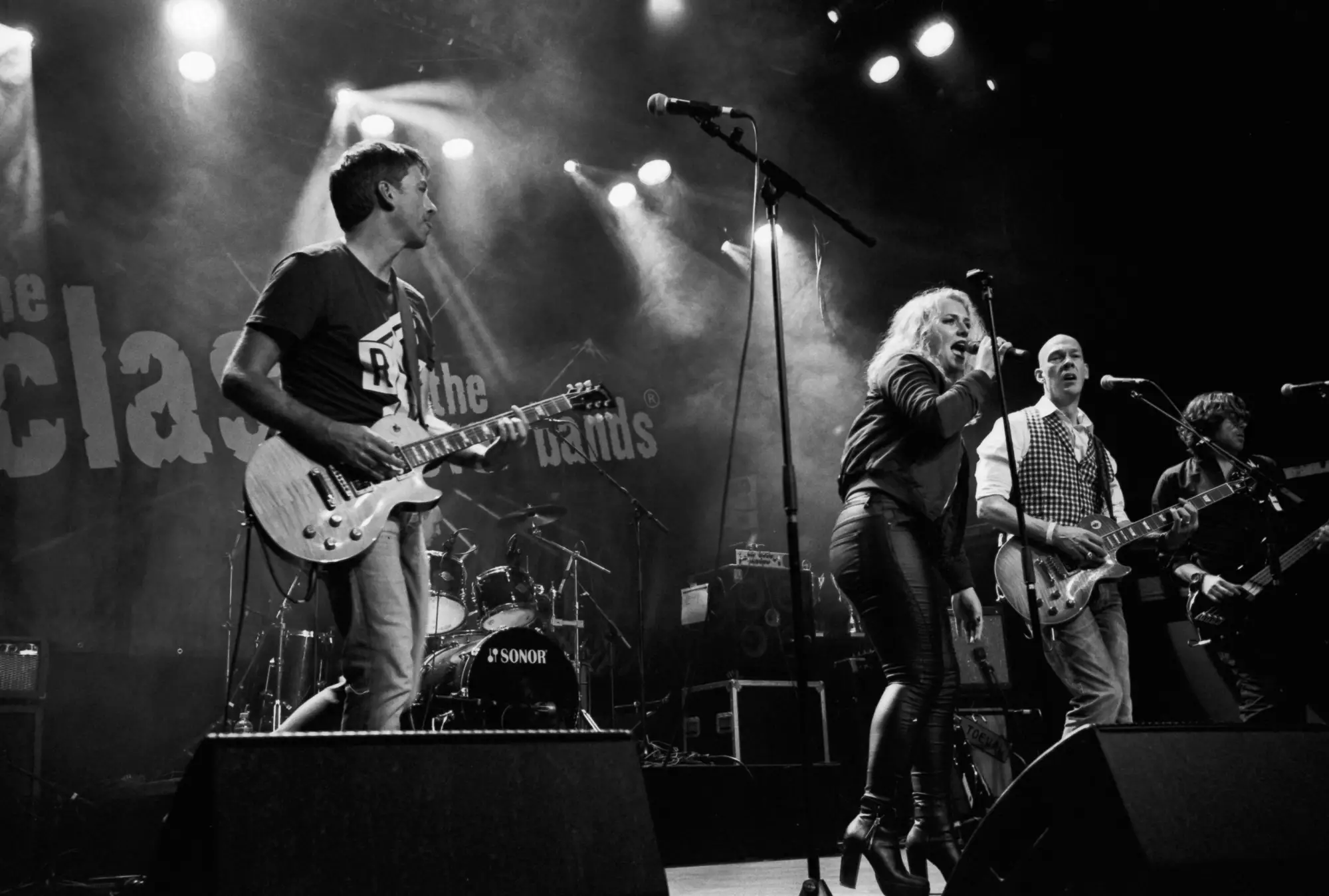
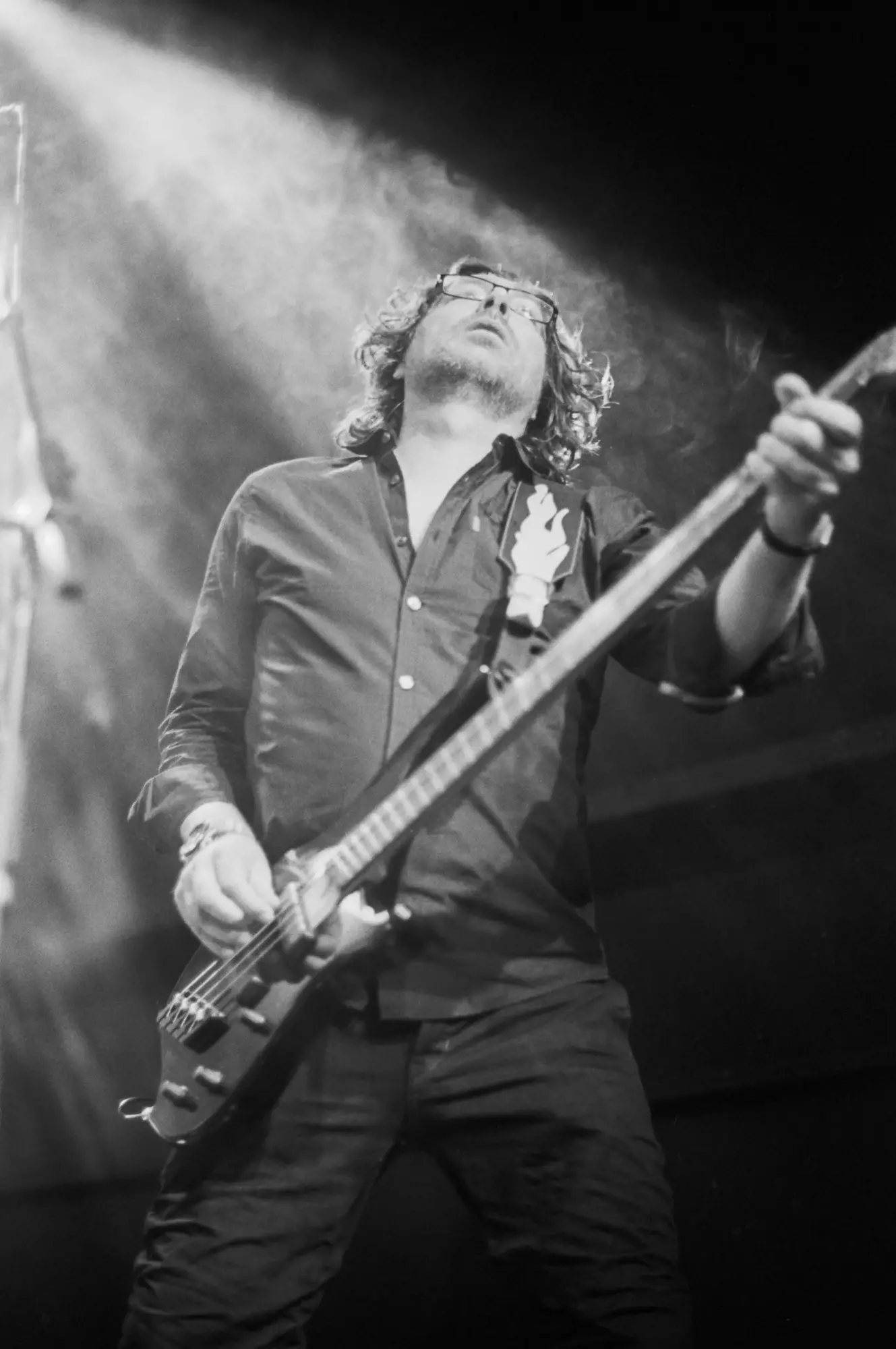
The film was developed by AG photo lab and scanned by me on an Epson V800.
If you are interested you can find more of my photos, both digital and film, on my website: whataukjesees.com. I am doing a 366 project on film, which I record daily on tumblr, and I post film photos regularly on instagram.
Thanks a lot for reading, and Hamish, thanks for having me!
Read Part 14 of journey into film here.
Share this post:
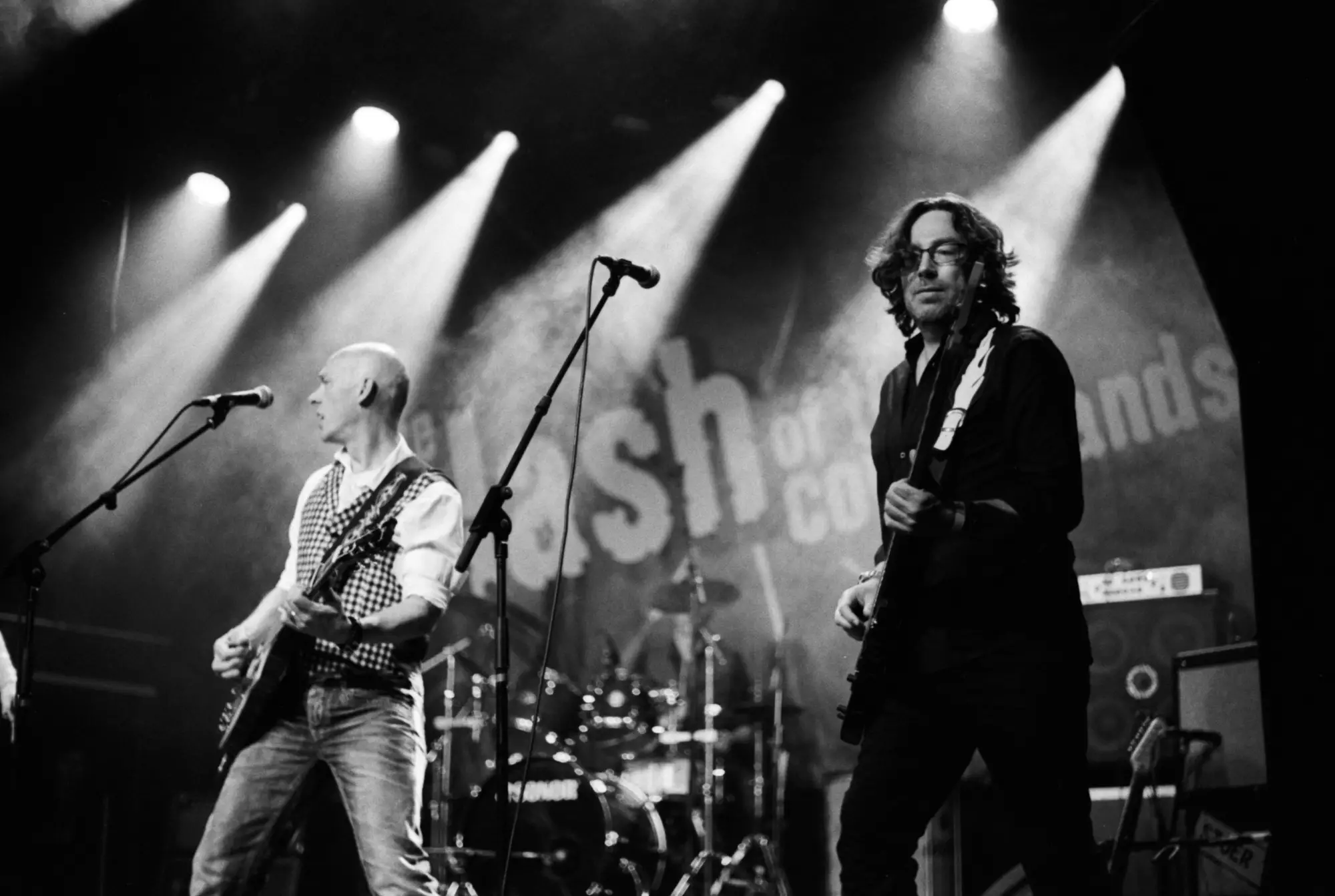








Comments
Hamish Gill on Pushing Tri-X To 3200, Or Shooting A Concert On Film – Guest Post by Aukje
Comment posted: 04/12/2016
So, technically you don't "push" a film to a speed.
Film has a fixed ISO, in this case, it is ISO400 - what you are doing is "rating" the film at a different "exposure index". In this case, you have rated it at exposure index 3200, or EI3200 ... Although, that said, since you aren't metering, your not really even rating it at a fixed EI, you are just shooting with a 3 stop push in mind by using EI3200 as the basis for exposure - something that is perfectly doable with bullet proof films like tri-x and hp5...
After that, you are (as you correctly say) pushing it 3 stops.
In short, it's useful to acknowledge the difference between ISO and EI - ISO is the film, EI is what you set the camera/meter to.
More often than not people describe the process in the way you have, but I know you see these posts as a platform for learning, so I thought I'd try and outline the technically correct way to describe what you are doing.
George Appletree on Pushing Tri-X To 3200, Or Shooting A Concert On Film – Guest Post by Aukje
Comment posted: 04/12/2016
Interesting texture. Rather than grain increase the film has a pleasing paste like structure. Giving still a grey range and some detail in shadows.
Comment posted: 04/12/2016
Aukje on Pushing Tri-X To 3200, Or Shooting A Concert On Film – Guest Post by Aukje
Comment posted: 04/12/2016
rollbahn on Pushing Tri-X To 3200, Or Shooting A Concert On Film – Guest Post by Aukje
Comment posted: 04/12/2016
I stand development my Tri-X when I am rating it at 1600 (would liek to try 3200) and it comes out just fine. The amazing thing is shooting various "ISO's" on one roll and leaving it in Rodinal for 1-2 hours and they all come out perfectly developed - like magic :)
Comment posted: 04/12/2016
Comment posted: 04/12/2016
Augen Tier on Pushing Tri-X To 3200, Or Shooting A Concert On Film – Guest Post by Aukje
Comment posted: 04/12/2016
About the scanner, I am using it all the time for both color and b&w, 35mm and 120mm. And I am sure you will get used to it very quickly. Besides, time is not a real issue (usually I read or eat during the process...).
Can't wait for your next post...
Comment posted: 04/12/2016
Comment posted: 04/12/2016
Frank Lehnen on Pushing Tri-X To 3200, Or Shooting A Concert On Film – Guest Post by Aukje
Comment posted: 04/12/2016
I stand developed in Rodinal for one Hour and the photos came out beautifully.
I love the grain, the contrast.... never did it with Tri-X but I'm amazed.
Great shots, Aukje!!
Comment posted: 04/12/2016
HW Kateley on Pushing Tri-X To 3200, Or Shooting A Concert On Film – Guest Post by Aukje
Comment posted: 04/12/2016
FYI. If you don't want to wait, and are interested in going there, Black and white films are very easy to develop at home with a daylight tank using common developers. I use the old standard d76 for triX when pushing. It's readily available.
Comment posted: 04/12/2016
Comment posted: 04/12/2016
Comment posted: 04/12/2016
John Lockwood on Pushing Tri-X To 3200, Or Shooting A Concert On Film – Guest Post by Aukje
Comment posted: 04/12/2016
Comment posted: 04/12/2016
Aukje on Pushing Tri-X To 3200, Or Shooting A Concert On Film – Guest Post by Aukje
Comment posted: 04/12/2016
Steve Ford on Pushing Tri-X To 3200, Or Shooting A Concert On Film – Guest Post by Aukje
Comment posted: 04/12/2016
Comment posted: 04/12/2016
Comment posted: 04/12/2016
Pierre Pichot on Pushing Tri-X To 3200, Or Shooting A Concert On Film – Guest Post by Aukje
Comment posted: 04/12/2016
One question: what scanner do you use?
Comment posted: 04/12/2016
Michael Rennie on Pushing Tri-X To 3200, Or Shooting A Concert On Film – Guest Post by Aukje
Comment posted: 04/12/2016
Hamish I'd like to write something about my experience of home development and scanning. Shooting on either my Minolta Dynax 7, Rolleicord or Leica M4.
Would this be ok?
Comment posted: 04/12/2016
Comment posted: 04/12/2016
Patrick Hudepohl on Pushing Tri-X To 3200, Or Shooting A Concert On Film – Guest Post by Aukje
Comment posted: 05/12/2016
Earlier this year, I dusted off the old film cameras (Nikon FE, F100 -- not very "35mmc approved", I'm afraid) and shot some Portra 400 and Tri-X. The negatives seem just fine, I've scanned most of them and this month I hope to spend some time selecting, editing and publishing the results. It's been a lot of fun to return to film, although I am certainly not going to give up on digital. And I must admit that adding a meterless rangefinder to my tools is both daunting and alluring...
Comment posted: 05/12/2016
Comment posted: 05/12/2016
Dan Castelli on Pushing Tri-X To 3200, Or Shooting A Concert On Film – Guest Post by Aukje
Comment posted: 06/12/2016
You got nice results from the film. I expected the shadow areas to be coal-black, but you've retained detail in the important areas.
I've always thought that photographers have more in common with musicians than artists. So, shooting a band is a visual connection to our creative 'cousins,'
I love available light/available gloom shots. I've tried Delta 3200 [35mm] on a number of occasions and have always been disappointed with the results. So, I did some research and found that the true speed of 3200 is around 1000 ISO. I tried a roll @ 1600, and used Sprint Standard film developer, following their directions as if I exposed the film @3200. I got results that I was pleased with. The film yielded images that came close to the actual lighting conditions I encountered on the nighttime streets of Florence.
Unfortunately, I haven't had the time or opportunity to shoot additional rolls in marginal light to see if the results are consistent and can be duplicated. I'm going to try some HP-5 (personal preference - I'm not a Tri-X kinda guy) @ 1600 & 3200 based upon your results.
Thanks for your pics & article. Nice work.
Comment posted: 06/12/2016
Dan Castelli on Pushing Tri-X To 3200, Or Shooting A Concert On Film – Guest Post by Aukje
Comment posted: 06/12/2016
I live in an area where there is no longer a camera store, so forums sustain the photography community and the idea exchange.
Comment posted: 06/12/2016
jeremy north on Pushing Tri-X To 3200, Or Shooting A Concert On Film – Guest Post by Aukje
Comment posted: 08/12/2016
The way you went about exposure is just right for this kind of photography. Had you relied on a meter it would have led you to overexpose, as it would have been fooled by the dark areas.
On the scanning, I have a v750 which came with Silverfast but I became disenchanted with it as they don't seem to support later Mac OS versions. I find though that the Epson software works pretty well
I look forward to more of your posts.
Comment posted: 08/12/2016
Comment posted: 08/12/2016
Comment posted: 08/12/2016
Comment posted: 08/12/2016
Dan Castelli on Pushing Tri-X To 3200, Or Shooting A Concert On Film – Guest Post by Aukje
Comment posted: 08/12/2016
Maria Martinez on Pushing Tri-X To 3200, Or Shooting A Concert On Film – Guest Post by Aukje
Comment posted: 28/04/2017
Comment posted: 28/04/2017